Automotive sensor type and development path
1. The sensor is the eye of the car, the essential components of ADAS and automatic driving
In the process of advanced assisted driving and automatic driving, the automatic/assisted driving function of the machine gradually replaces the initiative of the person, and completes a series of procedures for environment perception, calculation analysis and control execution.
The first thing in this series of procedures is to use the car's eye-sensor to sense the surrounding environment. The sensors used in the auto/assisted driving system mainly include: microwave/millimeter wave radar, ultrasonic sensor, camera, and laser radar.

2, currently mainly includes millimeter wave radar, camera, laser radar, infrared four
Different sensors have different principles and functions, and they play their respective advantages in different usage scenarios, making it difficult to replace each other.
The millimeter wave radar is not affected by the weather conditions, and the detection distance is far. It is the most cost-effective in the field of vehicle ranging, but it is difficult to identify pedestrians and traffic signs.
The camera has low cost, and the biggest advantage lies in the recognition function of the object. It is an indispensable sensor for lane departure warning and traffic sign recognition, but it has the disadvantages of relying on light, failure in extreme weather, and difficulty in accurate distance measurement.
Lidar has the highest detection accuracy and can be used to establish spatial three-dimensional maps in real time. It is the main sensor of unmanned vehicles such as Google and Baidu, but the disadvantages of high cost and poor effect in rain, snow and fog are also prominent.
The infrared technology is mature, generally used for short-distance anti-collision systems, and can not meet the accuracy requirements of long-distance, and is mostly used for reversing radar. Ultrasonic radar has the advantages of low cost but close detection distance, and the advantages of short distance ranging such as reversing reminder.
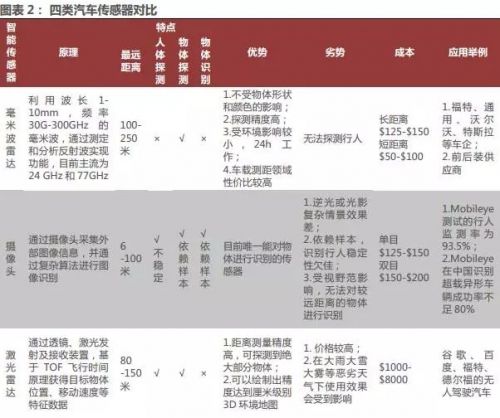
3. Countries have successively introduced policies to promote the popularization of ADAS systems.
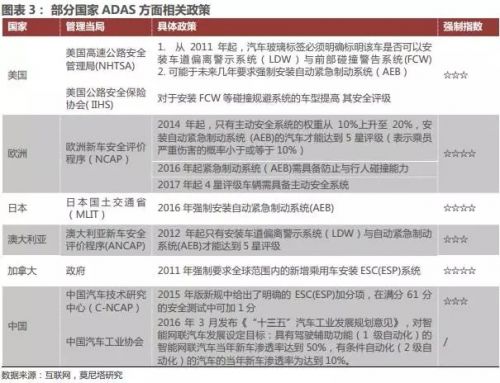
The current penetration rate of the ADAS system is only 8%-12% and 2%-3% respectively. Thanks to policy support and the scale effect of consumer electronics, the automotive sensor industry is expected to achieve rapid growth in the next few years. According to IHS Automotive's forecast, the overall market size of global anti-collision sensors will reach US$3.94 billion in 2014; by 2020 this market is expected to reach US$9.9 billion.
4, the current car OEM and tier1 manufacturers are the main force
Automotive sensors are automotive electronics. The requirements for safety and stability are extremely high. The earliest intervention and development path is still the OEM and tier 1 manufacturers. At present, these manufacturers have already cut through the independent research and development, cooperation, etc. The main driving force.
Most of the start-up companies currently cooperate with the OEM, and the OEMs distribute them to tier1. In the past 2 years, they have no big voice, but the overall direction is correct, and there will be opportunities in the follow-up.
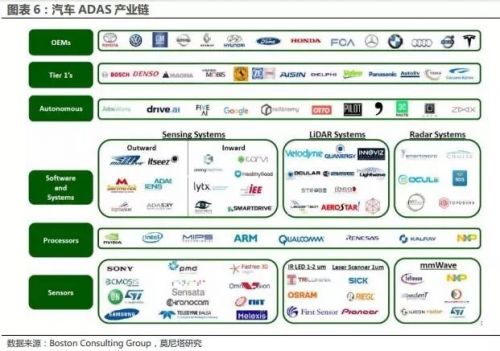
Millimeter wave radar
The millimeter wave radar mainly includes three parts: the antenna (including the plate and the whole radar structure), the chip of the RF front end and the DSP signal processing part of the background. Among them, the front end single-chip microwave integrated circuit MMIC and the radar antenna high-frequency PCB board are the core components.
At present, the front-end monolithic microwave integrated circuit (MMIC) is controlled by foreign companies, especially the 77GHz MMIC, which is only in the hands of a handful of foreign chip manufacturers such as Infineon, ST, and Freescale. At present, the domestic MMIC chip is in the initial stage of research and development, mainly in the 24GHz radar, and the enterprises such as Huayu Automobile, Hangzhou Zhibo and Wuhu Senstek have accumulated in the existing part.
In addition, the radar antenna high-frequency PCB board technology is also in the hands of foreign manufacturers, Schweizer occupies 30% of the global market share, the advantage in the 77GHz, the laminated sheet used in PCB is mainly provided by Rogers, Isola and other companies. Domestic high-frequency PCB board manufacturers have no technical reserves, and they are still imported according to the drawings. Hudian shares are suppliers of plates to the mainland and Bosch. Currently, they have cooperated with Schweizer on PCB products for 24GHz and 77GHz high frequency radars.
According to our understanding, from the perspective of cost, the long-distance radar module is generally 60-120 US dollars, and the short-distance distance is about 30-40 US dollars. Among them, the antenna & board, the RF front-end chip and the background DSP signal processing link are three parts. The cost is 1/3 each. However, from the perspective of business models, it is not possible to simply look at the price of radar modules, as well as application software licensing fees. Some foreign giants have software license fees of tens of millions of dollars.
The millimeter wave radar market is concentrated, and it has long been monopolized by foreign auto parts giants. It is based in Germany, the United States and Japan. The main companies are Bosch, Continental, Hella, Fujitsu Ten, Denso, Trina, Delphi, Autoliv et al.
In 2015, the top three manufacturers Bosch (22%), mainland (22%) and Hella (13%) accounted for more than half of the total. Bosch's main long-range millimeter-wave radar is mainly used in the self-cruise control system ACC system. The latest product LRR4 can detect vehicles up to 250 meters away. It is the millimeter wave radar with the longest detection range. The main customers include Audi and Volkswagen. The mainland's product line is complete and has a high market share in Stop&Go ACC. Hella has the largest market share in the 24GHz-ISM market.
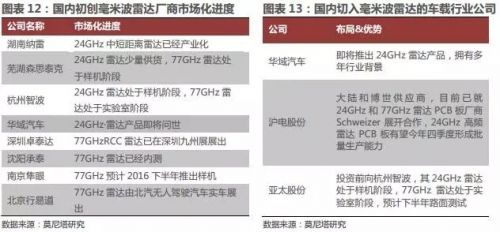
At present, the millimeter-wave radar sensors for high-end automobile assembly in the Chinese market all rely on imports, and there is no independent radar product. According to our understanding, the first phase of the domestic research and development phase has been basically completed. 2016Q4 will be launched with domestic independent radar products (24GHz), mainly to complete BSD blind spot detection, LCA lane switching assistance and other functions to solve the introduction of product form. The second phase of domestic R&D will also target 24 GHz products, with the goal of reducing costs, and products are expected to emerge by the end of next year.
Camera system industry chain
The in-vehicle camera is the main visual sensor of the ADAS system. After the image is captured by the lens, the photosensitive component circuit and the control component in the camera process the image and convert it into a digital signal that can be processed by the computer, thereby realizing the road condition around the vehicle. ADAS functions such as forward collision warning, lane offset alarm and pedestrian detection are realized.
The general principles of the car camera are as follows: 1) image processing, converting pictures into 2D data; 2) pattern recognition, identification by image matching, such as vehicles, pedestrians, lane lines, traffic signs, etc.; 3) using the motion mode of the object Or binocular positioning to estimate the relative distance and relative speed of the target object to the vehicle.
In terms of hardware, the car camera is mainly composed of CMOS lens (including lens and light sensor chip), chip, other materials (memory, sim card, casing), which are divided into monocular camera, rear view camera, stereo camera and surround camera. The main focus is on the monocular camera.

In terms of software, mobileye is taken as an example, mainly in the upgrade of the chip and the upgrade of the processing platform. The working frequency is increased from 122Mhz to 332Mhz. The change of the access mode doubles the rate, and the image is upgraded from 640*480 color pixels to 2048*2048. (Input) and 4096*2048 (output), etc.
Except for the ability of a small number of vendors to integrate vertically, most vendors focus their business on one or a few links in the industry.
From the perspective of market concentration, optical lenses are mainly dominated by Taiwanese manufacturers. Mainland manufacturers have certain advantages in infrared cut-off filters. Image sensors are mainly European, American and Korean manufacturers, and the module links are mainland China, South Korea, Taiwan, Japanese manufacturers have the highest share, and domestic manufacturers have grown rapidly. The optical lens industry is highly concentrated, with the top five manufacturers occupying 60% market share. Sunny Optical's shipments in 2015 have accounted for 9.4% of the world, making it the second largest in the world.
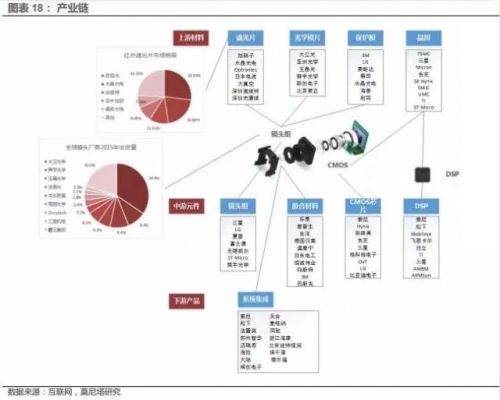
The monocular camera is still the mainstream in the future. With the development of 360-degree panoramic parking and surround vision system, it is expected that there will be more than 6 single-vehicle cameras in the future, including 1 front view, 1 rear view and 4 surround views. According to the MRRSE report, the global car camera shipments of 2014-2016 will increase at a compound annual rate of 11.3%. It is estimated that by 2020, the global car camera sales will reach 83 million.
In the next five years, the productization and miniaturization of binocular cameras may gradually break through, such as the binocular and three-purpose plans of Tras.
Graphics information processing chip, algorithm advancement, algorithm is mainly based on the perspective of deep learning, the development of the chip is mainly reflected in the upgrade of mobileye EyeQ products, looking forward to the development and production of EyeQ5.
Future market space
1. The mainstream car companies began to lay out part of the automatic driving in the second stage in 14 years.
Some of the mainstream brands have begun to deploy some of the second-stage autopilots in 14 years. Most of the automakers have already deployed autopilots, and as the technology matures, the autopilot level continues to increase.

2. It is estimated that the market size of the automotive sensor will reach 9.9 billion US dollars by 2020.
In 2014, the global pre-installation market ADAS new car penetration rate of about 15%, mainly concentrated in the US and German high-end models market, only about 3% in China. With the further improvement of domestic and international regulations, the market is increasingly strict with the demand for ADAS. Foreign mainstream manufacturers have stipulated that a large number of ADAS products will be installed in 2018. It is expected that the basic models will be equipped with ADAS functions in 2020.
According to Isuppli's forecast, by 2016, the global and Chinese ADAS market will be approximately US$6 billion and US$1.5 billion. By 2020, the global and Chinese ADAS market will reach US$30 billion and US$3 billion.
Automatic soap dispenser foam Intelligent Dispenser
Soap Dispenser Holder
Ningbo ATAP Electric Appliance Co.,Ltd , https://www.atap-airfryer.com